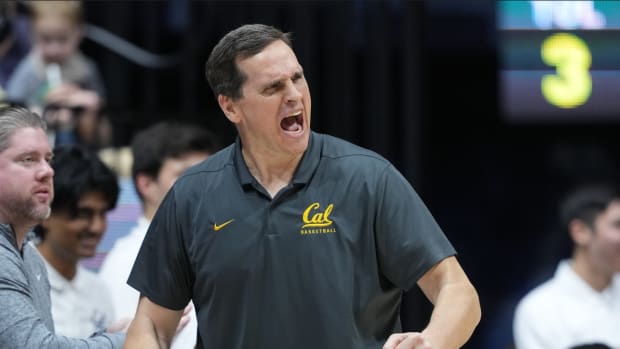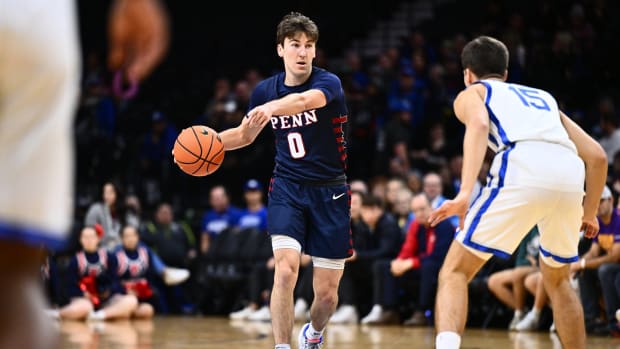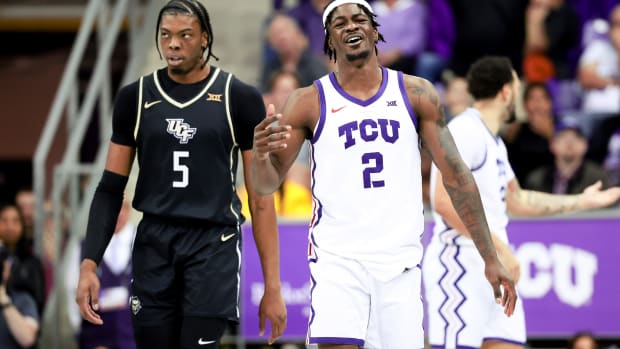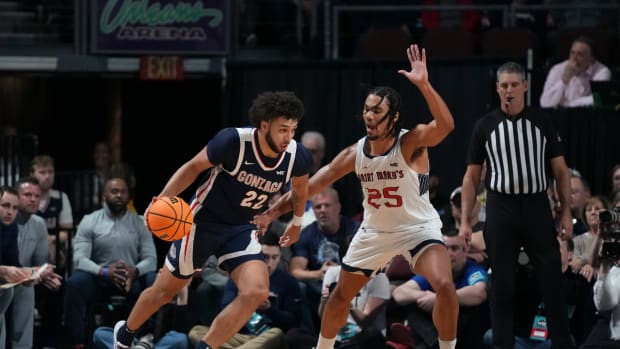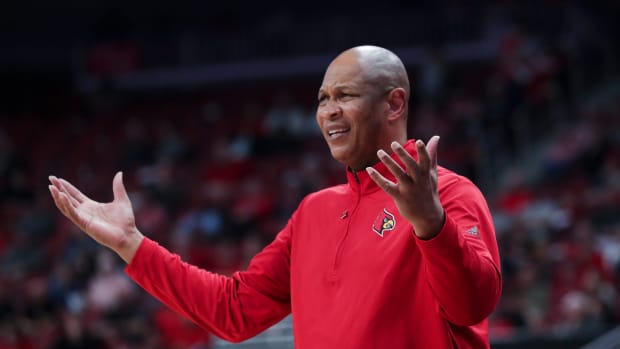NCAA Executive Asks Conferences to Consider Starting Basketball Season Two Weeks Early
The NCAA’s highest-ranking basketball executive has floated the idea to conference leaders about accelerating the start of the men’s basketball season, moving it up two weeks to increase scheduling flexibility and get more games played in event of a winter interruption.
NCAA senior vice president of basketball Dan Gavitt told Sports Illustrated on Monday that he has proposed moving season-opening games from Nov. 10 to Oct. 27, with perhaps a corresponding acceleration of practice from the currently scheduled start date of Sept. 29. The goal is for schools to play something closer to a full slate of regular-season games amid what could be an uncertain collegiate school year both academically and athletically, as campuses search for ways to deal with COVID-19 fallout.
“At this point it’s just a concept,” Gavitt said. “But we have presented it to the conference commissioners and the oversight committees. The ball is in their court. It has some utility, adds some flexibility and options with the (academic) calendar changing, which could affect the break period.”
With dozens of schools shutting down campus between Thanksgiving and the start of second-semester courses in January, Gavitt said it is “almost a certainty” that some basketball games scheduled for that window will be canceled. The optics of leaving winter sports teams on campus for six weeks or more while their fellow students are home is an issue, and there are concerns about traveling for several non-conference games during that time. That could result in schools sending their basketball teams home during the break as well, possibly eliminating anywhere from eight to 12 games and truncating the season.
In that scenario, Gavitt’s solution would call for front-loading the schedule with up to four games played per team in that window between Oct. 27 and Nov. 10. (Most schools will avoid competition on Nov. 3, which is election day, in order to give their athletes the opportunity to vote.) Some of the high-profile games subject to being canceled during the winter break might be moved to that late-October, early-November window, or local opponents could be scheduled during that time to limit travel. Playing conference games in that time also could be an option.
“A little more time, rather than less time, makes sense to me,” Gavitt said. “It would be permissive; no one is saying you have to do it. It would be up to the individual institutions or conferences to figure out how to do it.”
Gavitt said he first started sounding out conference leaders about the concept a couple of weeks ago, and response to the idea thus far falls into the wait-and-see category. For now, most high-major athletic departments are fixated on a more immediate (and financially weighty) concern: football and other fall sports seasons. Whether those will start or end on time, and how many games will be played, are all-consuming questions for athletic administrators right now.
What happens in football obviously will affect basketball. Projections are all over the map, ranging from a continued push to kick off on time Aug. 29, to conference-only schedules, to punting the season into the second semester. If football becomes a spring sport for a year, it would free up a television programming window in the fall for basketball—but the chances of that season starting on time would seemingly diminish if fall sports are being postponed.
“It would take some creativity,” Gavitt said of his accelerated season tipoff plan. “It would probably be imperfect from an operational standpoint. But what is going to be perfect this year? Once you start the season, there’s no looking back."
College basketball traditionally is dependent upon two months of non-conference competition to facilitate its NCAA tournament selection procedures. Most ratings metrics, including the NCAA NET Rating, use data from those games to establish a pecking order for strength of the individual conferences. A season with a dearth of non-conference games would create dilemmas for the men ’s and women’s selection committees in terms of at-large bids and seeding.
